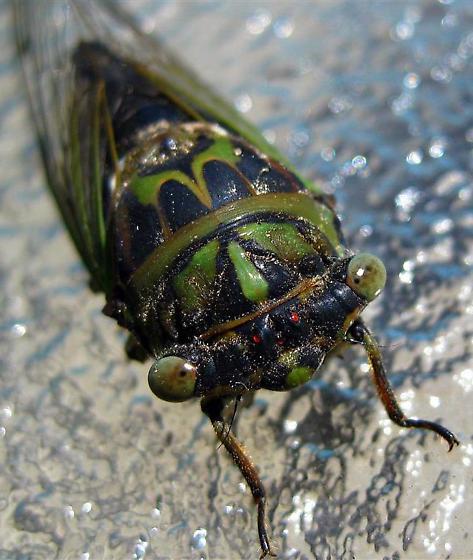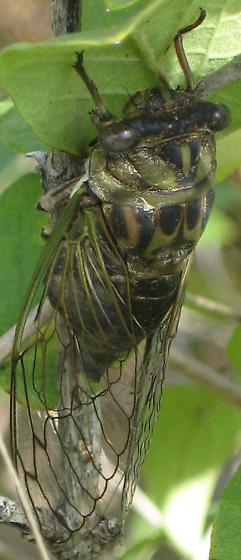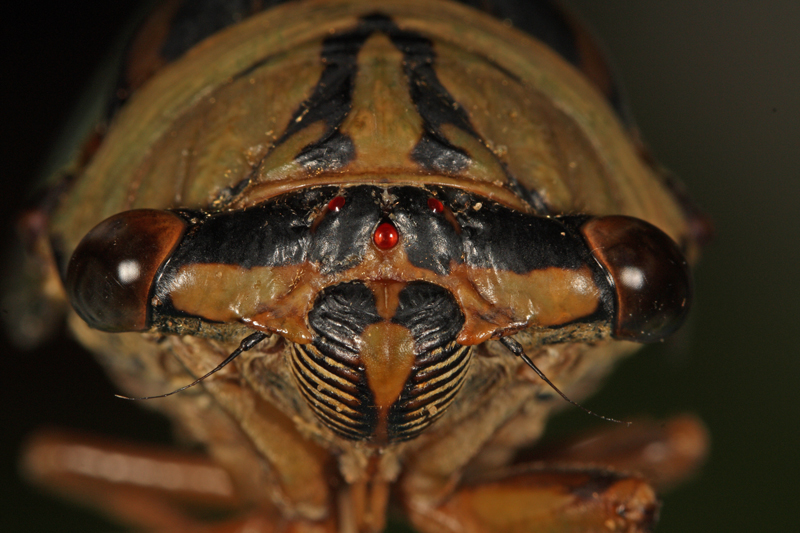
Form and Function
The Tibicen Canicularis cicada is an extremely fascinating and unique insect when it comes to examining its anatomical form and functions. Cicadas, in general, contain a lot of features common to other insects. They also posses a few that are particularly unique to only them though.
To start some of the general characteristics of the Tibicen Canicularis are a large body with a wide blunt head containing compound eyes which stick out on either side of the head (Howar, 1910). These compound eyes are used as their main source of vision and are located at the ends of the head in order to get the best range of view to spot any threats that they may encounter. They also contain a triangularly shaped set of three ocelli in the center if the head which essentially are simple eyes that can detect light (Howar, 1910). Also located on the head between the compound eyes but on either side of the ocelli is a pair of antennae which consist of about five smaller segments connected end to end (Howar, 1910). These antennae are largely used for simple sensation of the environment around them. Also, included on the cicadas are a large set of transparent wings. Once dry from hatching from its nymph stage, they are very powerful and can be used to quickly and efficiently fly from tree to tree. Hinged appendages are also crucial to the cicada as it gives them the ability to be completely mobile as well as very flexible. Finally, cicadas have a hard exoskeleton made of chitin which acts a protective armor to shield them from things such as predators.
Despite some of the more common characteristics that these insects share with several other arthropods, they also possess another feature that is far more unique. This most obvious characteristic is their unmistakable and infamous buzzing sound that only the male cicadas make. These deafening songs, sung high in the treetops in late summer, are produced by vibrating membranes found on the cicadas abdomen (National Geographic, 2013). This loud and potentially annoying droning can often be bothersome to some people but to female cicadas it is a sweet song of love that they are listening to. This is because these buzzing songs are actually meant to attract females(Cicada, 2013). Although us humans may not hear any difference between the buzzing of one cicada or antoher, the cicadas can in fact differentiate the songs of not only other species but even separate individuals (National Geographic, 2013).
Click here to find out how the cicada
feasts!
Or
Go back to Home


